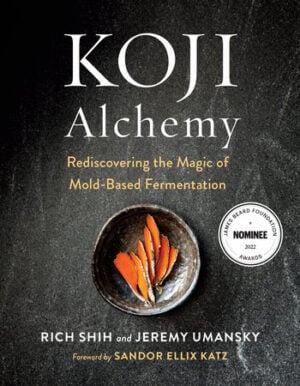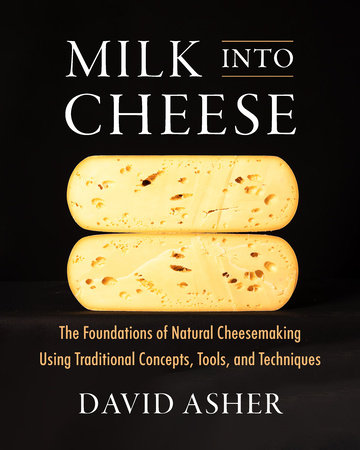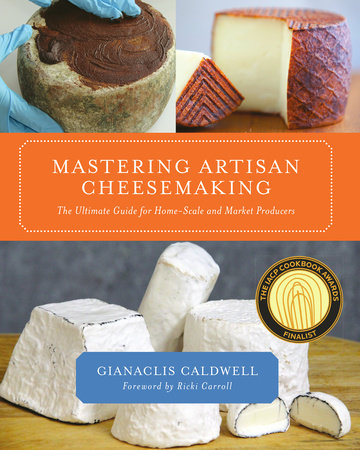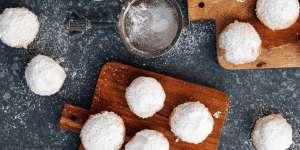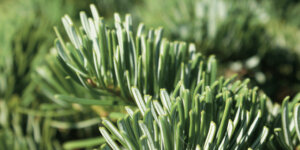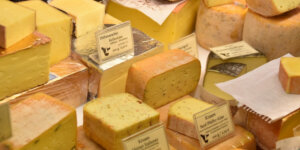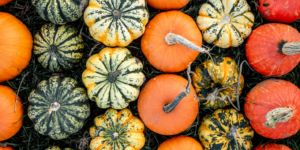Umami Bomb: Caramelized Miso Cheese
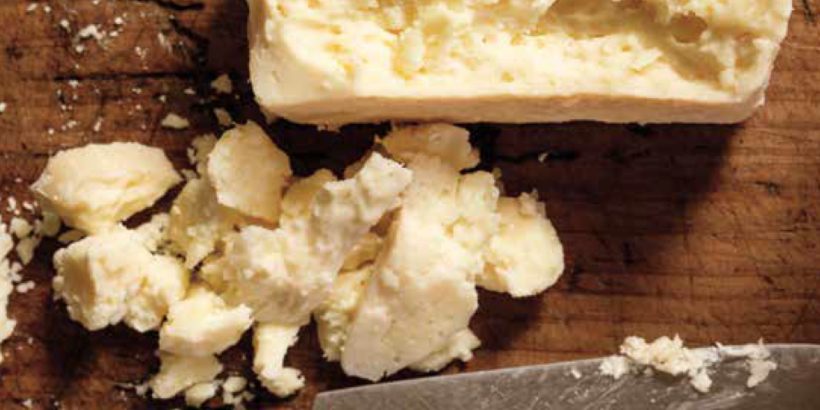
If you read our post about growing koji in your kitchen, you’re probably itching to try out those new koji skills! This miso cheese recipe is an excellent next stop on your koji-kitchen journey. Miso cheese is sure to add a twist to any cheese lover’s plate, plus it’s easy to make at home!
The following is an excerpt from Koji Alchemy by Rich Shih and Jeremy Umansky It has been adapted for the web.
Photo Credit: Peter Larson
Our good friend James Wayman, chef of the Oyster Club in Mystic, Connecticut, is making a huge impact on the southern New England food scene. He was inspired by our Miso Cheese and decided to make his own. As a result, he came up with a variation that we had to share.
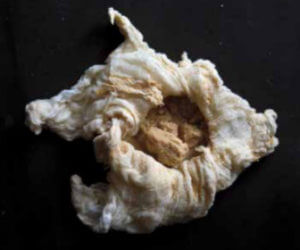
Dried ricotta miso cheese. Photo by Claudia Mak.
Ingredients
- 453 g goat cheese
- 226 g jasmine rice koji
- 33 g sea salt
Procedure
As you may have noticed, this recipe calls for a 2:1 ratio of protein base to koji. This ultimately increases the protein-to-starch ratio, which leans toward more umami (with less sugar for sweetness) as well as ultimate acidity in the fermentation, and follows along the lines of a traditional long-term miso that’s focused on protein conversion for umami over feeding microbes.
Follow the mixing and containment instructions in the recipe for Miso Cheese. Let the cheese do its thing at ambient temperatures for a month. (You’ll have to keep your eye out for the possibility of rancidity, of course. However, in all of our years of making Miso Cheese at ambient temperatures, we’ve never had an issue with it tasting bad.)
After the set duration, form a ball with the miso and hang it in cheesecloth for another week at ambient temperatures. Due to the ball shape, a touch of alcohol will build up inside. Break up the ball in a medium-sized bowl so the largest pieces are no bigger than 0.5 inch (1.2 cm). Spread it evenly on trays in a dehydrator set for 140°F (60°C) and run it for 8 hours. You’ll end up with an amazing caramelized crumble that has crazy umami to top whatever you’d normally grate a sharp cheese or Parmesan over.
As an extension of this technique, you may be thinking that smoked cheese as a base for making an amino paste would be a good way to go. Well, we’ve found that there are times when it doesn’t work out well. Smoking generates creosote, which is deposited on the food. It’s acrid, bitter, and binds well to fats. We’ve found that when you use smoked cheese as a base for a miso, the undesirable flavor overpowers. This is especially true when you dehydrate it. So if you would like to make a smoked version, we recommend doing a cold smoke after all is said and done.
Recommended Reads
Recent Articles
The scent of fir trees is a holiday staple. Immerse yourself even further into the holiday cheer and try introducing fir to your taste buds. From classy cocktails to rustic potatoes, fir adds excellent seasonal flavor.
Read MoreTired of the same old side dishes for your holiday dinner? Excite your tastebuds & bring some fresh flavors with these unique and flavorful side dish recipes!
Read MoreAttention all cheese lovers! If you’re looking for recipes to satisfy all your cheesy needs, then look no further.
Read MorePumpkins: Halloween symbol or sweet treat? But have you ever wondered how they became a holiday staple? Discover the rich history behind this fall favorite!
Read More

